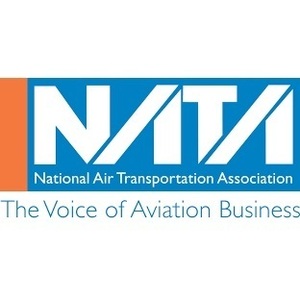4AIR, NATA announce SAF delivery receipt for business aviation

July 27, 2022
BY National Air Transportation Association
On July 26, the National Air Transportation Association in partnership with 4AIR announced the release of a first-ever Sustainable Aviation Fuel (SAF) receipt for business aviation. The SAF Delivery Receipt allows fixed-base operators (FBOs) to provide industry-requested, standardized documentation to business aircraft operators about their uplift of SAF. Aircraft operators can use the new receipt both for certification by 4AIR and others of their efforts to fight climate change, and for compliance with Environment, Social and Governance (ESG) goals.
At present, the largest emissions reductions are enabled by using SAF, but operators currently are receiving different documentation depending on their supplier. Moreover, there is no way to easily link the sustainability documentation to the “last mile uplift” from the FBO to the operator.
Advertisement
“Sustainable Aviation Fuel is today’s most accessible way to not just offset but actually reduce carbon emissions that contribute to climate change,” said 4AIR President Kennedy Ricci. “However, many operators were struggling to get the necessary information to report on their use of SAF. Our collaboration with NATA provides a standardized paper trail for everyone in the industry to know what to look for. It both proves and highlights the use of SAF, which will encourage its wider adoption.”
Documenting the feedstock used with a particular uplift is vital to know the carbon intensity of the fuel. Similarly, an operator needs to know the blend of the fuel uplifted to calculate the actual emissions reduced.
The first standardized proof of purchase will make operators more aware of the level of sustainability of the SAF they have uplifted. The documentation – like a W2 for sustainability – allows them to document their use for reporting. This will drive more uplift of SAF or encourage operators to seek it out to arrive or depart from a location where it is available to meet their sustainability goals or enhance their ESG efforts.
Advertisement
“This is another example of the business aviation industry’s efforts to show that, while carbon and emissions offsets are a critical starting point, we must encourage adoption of SAF and other carbon-reducing technologies wherever available,” said NATA President and CEO Timothy Obitts. “This formal documentation of the use of SAF fulfills an important industry need and provides a pathway for sustainability to become standard operating procedure throughout business aviation.”
Related Stories
The Michigan Advanced Biofuels Coalition and Green Marine are partnering to accelerating adoption of sustainable biofuels to improve air quality and reduce GHG emissions in Michigan and across the Great Lakes and St. Lawrence Seaway.
EIA reduces production forecasts for biobased diesel, increases forecast for other fuels, including SAF
The U.S. Energy Information Administration reduced its 2025 forecasts for renewable diesel and biodiesel in its latest Short-Term Energy Outlook, released April 10. The outlook for “other biofuel” production, which includes SAF, was raised.
FutureFuel Corp. on March 26 announced the restart of its 59 MMgy biodiesel plant in Batesville, Arkansas. The company’s annual report, released April 4, indicates biodiesel production was down 24% last year when compared to 2023.
Neste has started producing SAF at its renewable products refinery in Rotterdam. The refinery has been modified to enable Neste to produce up to 500,000 tons of SAF per year. Neste’s global SAF production capacity is now 1.5 million tons.
Tidewater expects to make final investment decision on proposed SAF project during second half of 2025
Tidewater Renewables Ltd. has reported that its biorefinery in Prince George, British Columbia, operated at 88% capacity last year. A final investment decision on the company’s proposed SAF project is expected by year end.
Upcoming Events










